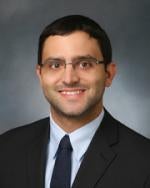Addressing a jury verdict of invalidity, the US Court of Appeals for the Federal Circuit found that the district court abused its discretion in allowing trial testimony regarding obviousness from a lay witness, and remanded for a new trial. HVLPO2, LLC v. Oxygen Frog, LLC, Case No. 19-1649 (Fed. Cir. Feb. 5, 2020) (Moore, J).
In 2016, HVLPO2 sued Oxygen Frog for infringement of three patents related to an oxygen supply system used for glass blowing. HVLPO2 moved for summary judgment of infringement of two patents, which the court granted. The case proceeded to a jury trial on Oxygen Frog’s invalidity defense. During the trial, Oxygen Frog introduced testimony from a glass blowing artist who described his prior art system and testified that he thought it would have been obvious to modify the prior art to obtain the claimed invention. After the jury returned a verdict that the asserted claims were invalid due to obviousness, HVLPO2 moved for a new trial based on the introduction of the glass blowing artist’s testimony. The district court denied the motion, holding that the testimony was permissible and that any error was harmless due to a limiting instruction given to the jury. HVLPO2 appealed.
The Federal Circuit held that the district court abused its discretion in allowing testimony regarding obviousness from the glass blowing artist. The Court reiterated that testimony pertaining to infringement or invalidity must come from a witness qualified as an expert in the pertinent art of the asserted patents, and accordingly held that it is an abuse of discretion to allow lay witness testimony regarding the underlying components of obviousness or the ultimate conclusion of obviousness: “Obviousness and each of its underlying components are analyzed from the perspective of a person of skill in the art.” The Court explained that the glass blowing artist’s testimony related to both (i.e., content of the prior art and obviousness) and thus constituted expert opinion testimony. Because the artist was only proffered as a lay witness and did not provide an expert report, the Court concluded that his expert opinion testimony was impermissible.
As to the district court’s limiting instruction, the Federal Circuit agreed that an instruction to disregard the inadmissible testimony might have cured the error, but concluded that the district court’s actual instruction seemed to encourage the jury to rely on the artist’s testimony and was thus insufficient. The Court remanded the case to the district court for a new trial on invalidity.




 />i
/>i


